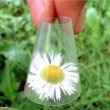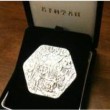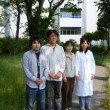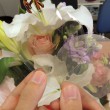Research
Printed Electronics on NanoPaper
Outlines
Cellulose is the most common and abundant bioresources, mainly originating from higher plants. We have successfully extracted cellulose nanofibers with widths of 4-15 nm from wood pulps, and have developed cellulose nanofiber-based materials, such as transparent paper, especially for electronic applications.
Our targets
1. Optically transparent nanofiber paper
2. Paper device
3. Printed electronics
4. Optically transparent composites reinforcing with cellulose nanofibers
See our activity below the link.
http://sciencechannel.jst.go.jp/Q140001/detail/Q140001004.html


Fig. 2. Printed electronics on nanopaper
1. Optically transparent nanofiber paper
1-1. Reinventing of the paper !

M. Nogi et al. Advanced Materials (2009) DOI: 10.1002/adma.200803174
M. Nogi et al. Applied Physics Letters, (2009) DOI:10.1063/1.3154547
1-2. High total transmittance & Low haze

M. Nogi et al., Applied Physics Letters, (2013) DOI:10.1063/1.4804361
1-3. High thermal resistance
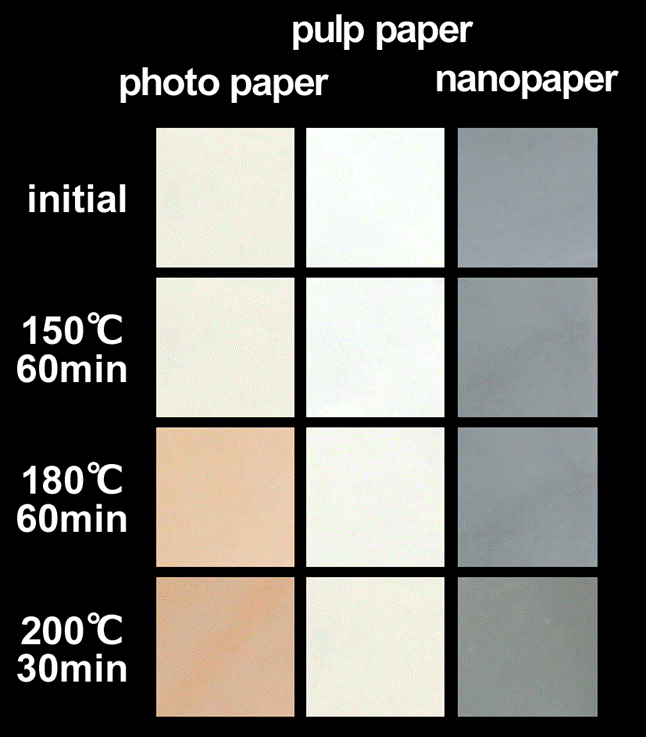
M. Nogi et al., Applied Physics Letters, (2013) DOI:10.1063/1.4804361
Ming-Chun Hsieh et al., Nanoscale (2013), DOI:10.1039/C3NR01951A
2. Paper devices
2-1. High dielectric constant nanopaper
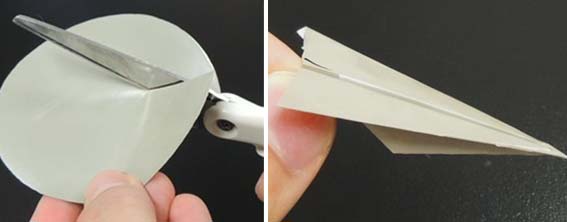

T. Inui et al. Advanced Materials (2014) DOI: 10.1002/adma.201404555
2-2. Paper memory (ReRAM)
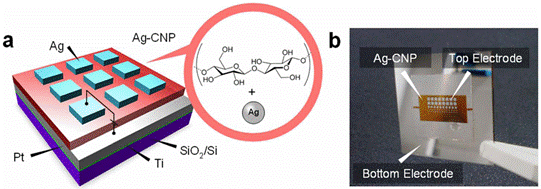
K. Nagashima et al. Scientific Reports (2014) 4, 5532, doi:10.1038/srep05532
2-3. Transparent electrode on Nanopaper
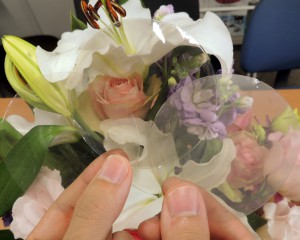
H. Koga*, M. Nogi* et al. NPG Asia Materials (2014) doi:10.1038/am.2014.9
2-4. Nanopaper transistors

Y. Fujisaki, H. Koga, M. Nogi et al. Advanced Functional Materials (2013) DOI: 10.1002/adfm.20130302
2-5. Conductive lines on nanopaer
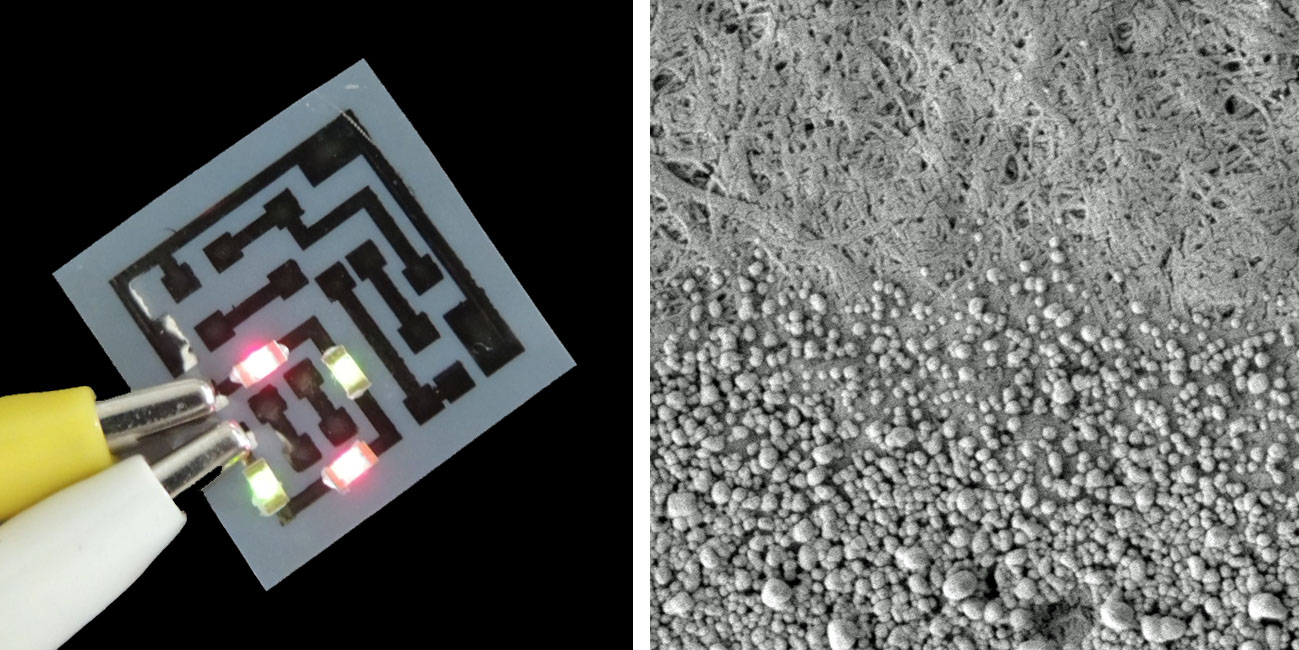
Ming-Chun Hsieh, M. Nogi* et al., Nanoscale (2013) DOI:10.1039/C3NR01951A
2-6. Foldable nanopaper antenna
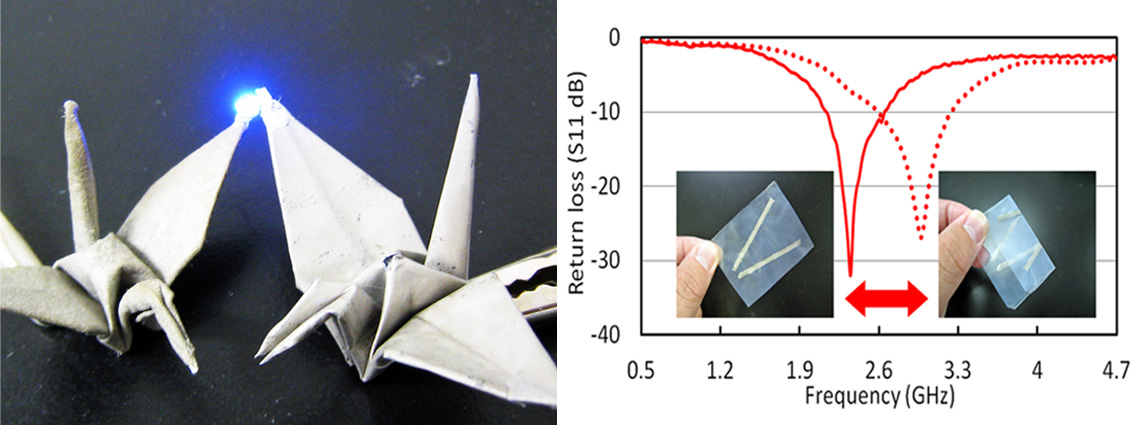
M. Nogi*, N. Komoda et al., Nanoscale (2013) DOI: 10.1039/c3nr00231d
2-7. Printable Conductive Nanoink
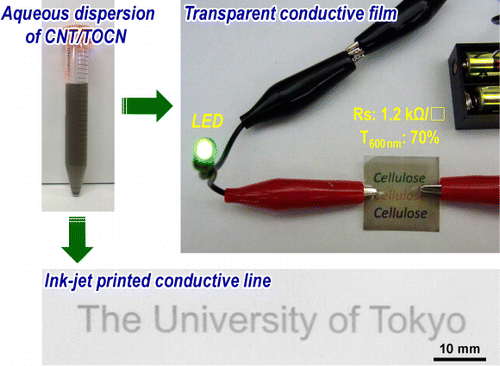
Cellulose nanofibers act as dispersing agent for carbon nanotubes. The aqueous dispersion can be used as printable nanoink to provide conductive properties for various substrates including PET films.
H. Koga*, T. Saito et al. Biomacromolecules (2013) DOI: 10.1021/bm400075f
3. Printed electronics using plastics
3.1. Printed antennas
Highly sensitive antenna using inkjet overprinting with particle-free conductive inks
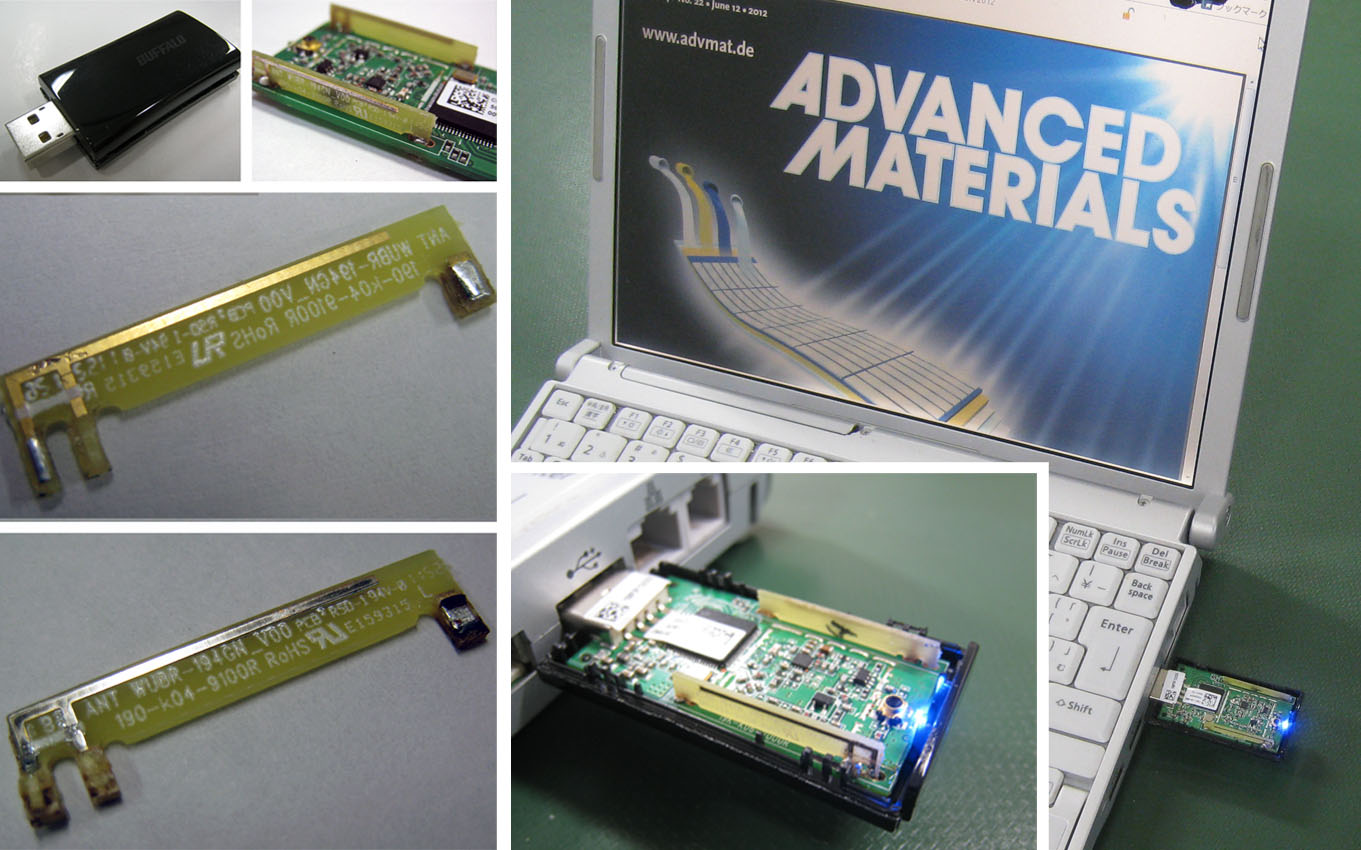
N. Komoda, M. Nogi* et al., ACS Appl. Mater. Interfaces (2012) DOI: 10.1021/am301747p
Printed Silver Nanowire Antennas with Low Signal Loss at High-Frequency Radio
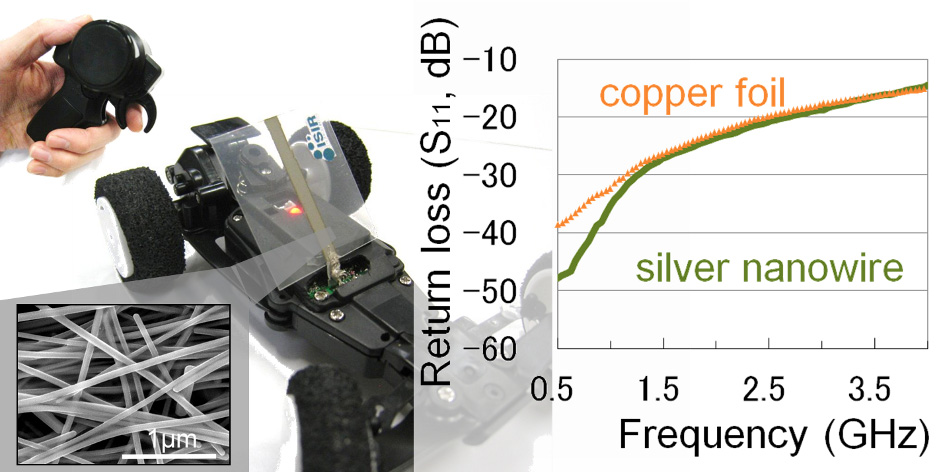
N. Komoda, M. Nogi* et al., Nanoscale (2012) DOI: 10.1039/C2NR30485F
3.2 High conductive lines printing using an inkjet printer
Absorption layers of ink vehicles for inkjet-printed lines with low electrical resistance

C. Kim, M. Nogi* et al. RSC Advances (2012) DOI 10.1039/C2RA21442C
Inkjet-printed lines with well-defined morphologies and low electrical resistance on repellent pore-structured polyimide films

C. Kim, M. Nogi* et al. ACS Applied Materials & Interfaces (2012) DOI: 10.1021/am300160s
Electrical conductivity enhancement in inkjet-printed narrow lines through gradual heating
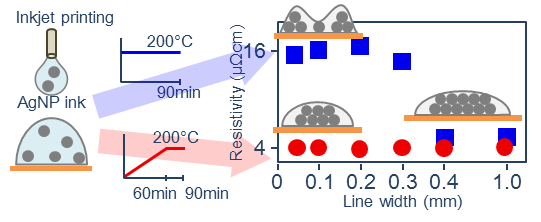
C. Kim, M. Nogi* et al. Journal of Micromechanics and Microengineering (2012) DOI:10.1088/0960-1317/22/3/035016
3.3 Fabrication of Silver Nanowire Transparent Electrodes at Room Temperature
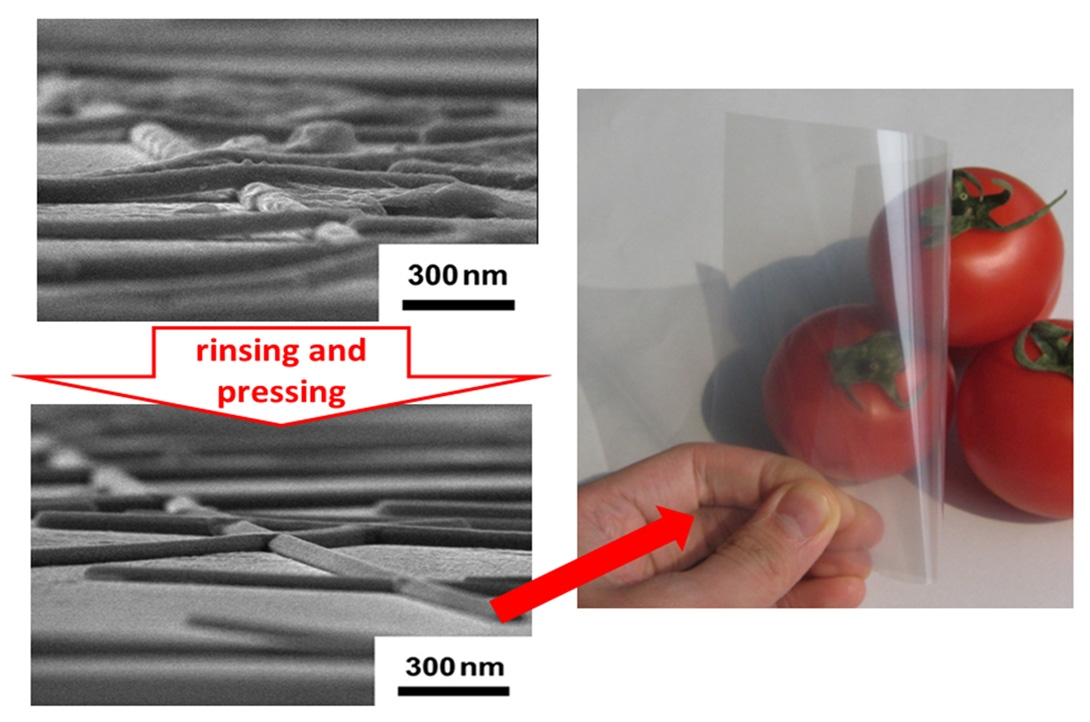
T. Tokuno, M. Nogi* et al. Nano Research (2011) DOI: 10.1007/s12274-011-0172-3
3.4. Printable and Stretchable Conductive Wirings Comprising Silver Flakes and Elastomer
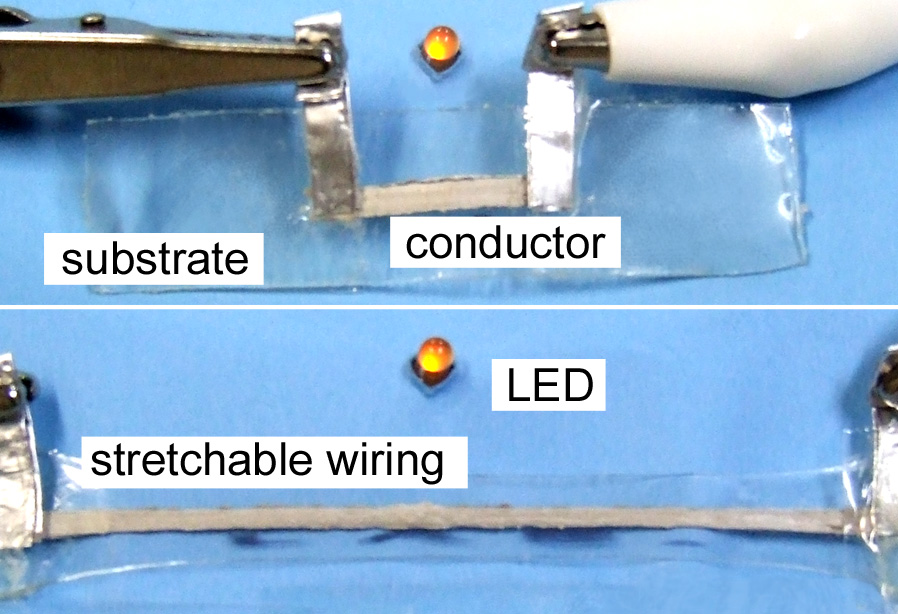
T. Araki, M. Nogi* et al., IEEE Electron Device Lett. (2011) DOI: 10.1016/j.compscitech.2011.05.006
4. Optically transparent nanocomposites ( with Prof. Yano in Kyoto univ.)
4.1. Optically transparent composites reinforcing with cellulose nanofibers
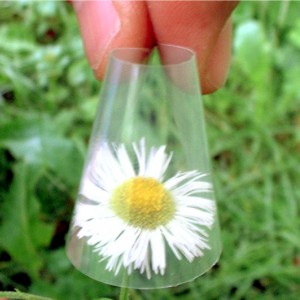
H. Yano et al., Advanced Materials (2005) DOI: 10.1002/adma.200400597
M. Nogi et al. Appl. Phys. Lett. (2005) DOI: 10.1063/1.2146056
4.2. Transparent Nanocomposites Based on Cellulose Produced by Bacteria Offer Potential Innovation in Electronics Device Industry
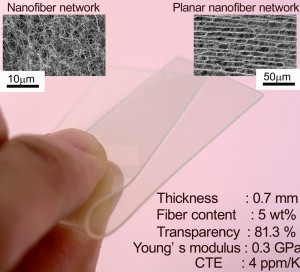
M. Nogi et al. Advanced Materials (2008) DOI: 10.1002/adma.200702559
© Department of Functionalized Natural Materials ISIR, Osaka University


